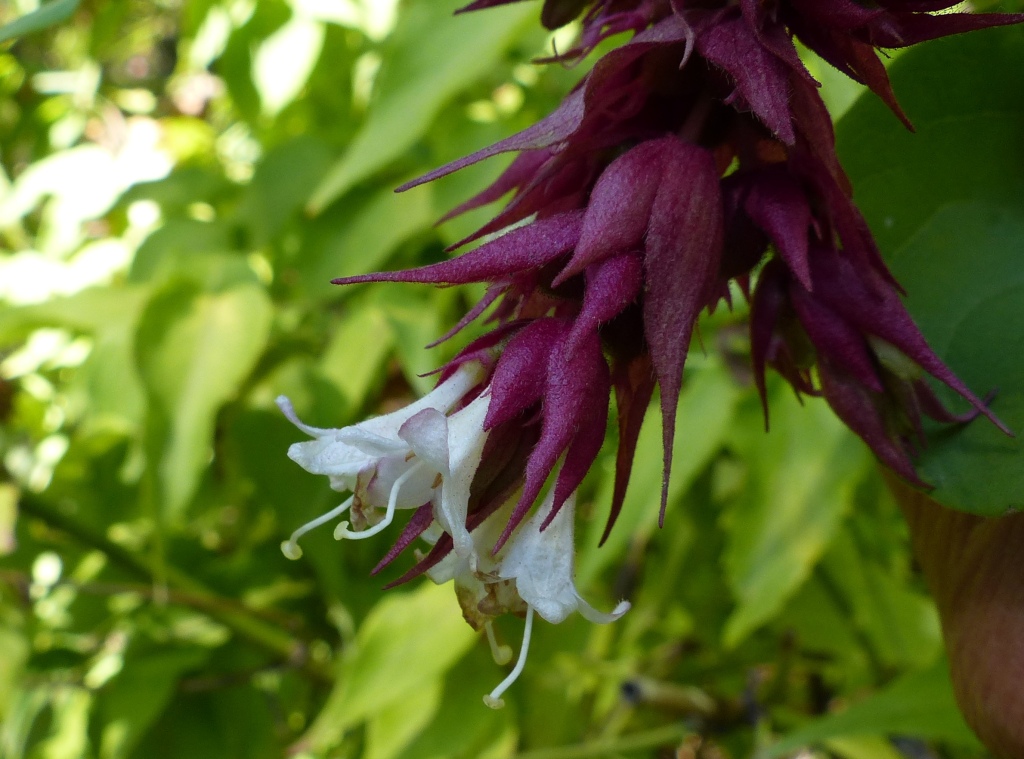Leycesteria formosa
Wall. Himalayan HoneysuckleSoft-wooded shrub to c. 2 m high; stems finely hairy to glabrescent, c. hollow. Leaves ovate to ovate-lanceolate, mostly 5–15 cm long and 2–6 cm wide, apex long-acuminate, base cuneate to cordate, margins entire or finely toothed, glabrous or finely pubescent below; petioles 5–15 mm long. Inflorescences drooping, 2–10 cm long. Flowers in compact cymes subtended and exceeded by bracts; bracts leafy, ovate, to c. 25 mm long, purplish; sepals linear-lanceolate, 5–6 mm long, glandular-hairy; corolla 12–20 mm long, white or purplish, lobes ovate, 3–5 mm long. Berry ovoid to globose, c. 10 mm long, dark red. Flowers summer.
VRiv, GipP, CVU, NIS, EGL, EGU, HSF, HNF, OtR, Strz, HFE, VAlp. Also naturalised NSW, Tas., New Zealand. Native to the Himalayas and western China. Naturalized in moister forests and locally common (e.g. Dandenong Range, Noojee area, Bogong Village). Its range appears to have increased dramatically since c. 1970 when it was known to be naturalised only in the Loch River valley near Noojee.
Jeanes, J.A. (1999). Caprifoliaceae. In: Walsh, N.G.; Entwisle, T.J., Flora of Victoria Vol. 4, Cornaceae to Asteraceae, pp. 642–647. Inkata Press, Melbourne.
 Spinning
Spinning


